Typically consumers don’t jump out of bed in the morning, open their laptop, and immediately purchase something right there on the spot. This is especially true for products or services with a steep price tag. Instead, consumers often take their time to research and evaluate all of their options before pulling the trigger on large ticket items.
The journey to purchasing (or committing to a purchase) is integral to the sales funnel. You should highly consider the buyer’s journey to help you understand where your potential customers are in their decision-making process.
Mapping out the buyer’s journey is crucial to help you provide the proper content your consumers need at every step of the journey to push them further down the sales funnel.
According to Hubspot, 60% of marketers consider content as “very important” or “extremely important” at each stage of the buyer’s journey.
Providing valuable content can be a highly effective way to generate leads and convert them into paying customers. But it takes time and hard work. You cannot do it for a couple of months and expect to see results.
Instead, content marketing is more like planting seeds in your garden — you must tend to it throughout the year so the flowers will bloom in the spring.
What is the Buyer’s Journey?
The buyer’s journey is the process that a customer goes through when making a purchase and can be broken down into three stages: awareness, consideration, and decision.
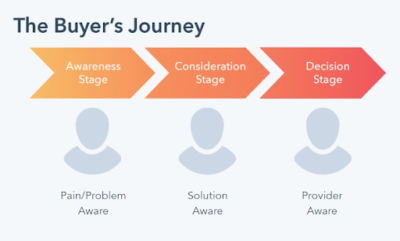
At each stage of the buyer’s journey, your potential customers will have different questions and problems they’re looking to solve. If you can meet them where they are in their buyer’s journey, and with the right content, you can help them move from one stage to the next.
For example, this FAQ page for CMDB would be one of the first stops on the buyer’s journey. Before purchasing a specific software, consumers will first ask Google, “What is a CMDB?” to better understand the software in more detail. Content like this needs to be the first result on Google to help answer their question and provide a solution to their needs.
Using the right content at the right time in the buyer’s journey helps convert potential customers into paying customers. This process may seem simple, but it can be difficult for marketers to get right.
Buyer persona research is an essential component of content marketing strategy. By understanding your audience’s unique process for awareness and evaluation, you can create custom-tailored content that is most effective for them.
Awareness Stage
A person has noticed their company’s website isn’t performing as well as possible. They’ve heard of website optimization, but they don’t know much about it or how to go about making improvements.
In this situation, people will often search online for some guidance. Content at this stage usually takes the form of blog posts with general information on a topic. This article you’re reading right now is a prime example. The goal here is to help educate readers on what they need to do next.
The buyer’s journey begins when a consumer realizes they have a problem that needs solving. Then they start searching for solutions (a new online marketing strategy or a better ecommerce platform). In the awareness stage of the buyer’s journey, your prospect becomes aware of their pain point (this could be an increase in website traffic or more people clicking on “add to cart”).
Content Examples for the Awareness Stage
Blog Post
Blog posts can be an effective way to reach your target audience in the awareness stage. By creating a blog post that addresses an issue that your target audience is searching for, you can build a valuable brand asset and attract new visitors to your site.
Calculator
When someone is looking for a solution to a problem, they’re likely skimming through content and collecting information from multiple sources. They want something to help them make better decisions, solve problems quicker, or learn new information. And calculators do just that.
Yes, words matter—and so does design—but calculators provide an interactive element that makes it easier for people to engage with your content.
You might have the most beautiful blog post about how important it is to track net worth, but without anything to engage your reader, they might glance over it for two minutes (at most) and bounce from your website forever.
On the flip side, you could have a landing page that features an interactive net worth calculator where readers can calculate a quick estimate of their net worth.
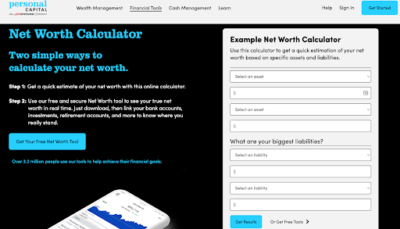 (Image Source)
(Image Source)
A tool like this keeps your target audience engaged, but it also creates a desire to come back to your site in the future to recalculate their net worth as their assets continue to grow. Calculators are one of the best lead magnets for attracting repeat users.
Social Media Post
Social media posts are one of the best ways to create awareness for your business in the mind of your target audience. The reason for this is simple: everyone uses social media.
People are spending more time on social media than ever before, and they’re using it more than they use any other channel—including search engines. More than 80% of every generation uses social media at least once per day. Due to the broad reach of social media, it is a no-brainer to publish valuable content across all social media platforms.
 (Image Source)
(Image Source)
In the example above, Home & Jet shares a travel guide on Facebook to provide their followers with the best places to escape for a vacation in 2022. Travel demand is on the rise after restrictions have finally eased after nearly two years of shutdowns due to COVID-19.
Whitepaper
A whitepaper is an online guide or report on a specific topic, especially one that an organization publishes. The key to writing a good whitepaper is to make sure that you’re providing information that will not be found elsewhere so that your readers understand the value of your report.
Since people go online looking for solutions, especially when they have a problem, giving them a resolution is an effective way to gain their trust.
uSERP publishes yearly whitepapers to provide unmatched insight into the current state of link building and other essential SEO strategies.
This 2021 report outlines the findings from 800+ industry experts and the importance of link building for brand awareness, with 84.39% agreeing that link building significantly impacts brand authority.
Consideration Stage
At the consideration stage, you should be offering content that helps the buyer in their research. This is an excellent place to provide case studies and comparison guides.
Remember, your buyer needs to feel armed with the information necessary to make an informed decision. Your content also needs to demonstrate a high level of authority and industry expertise to establish trust in your brand and stand out as the top choice above your competitors.
In this stage of the buyer’s journey, prospects research what options are available to solve their problem. They’ll look at different types of solutions (a modest blog-based content marketing strategy vs. an expensive PR campaign) and various vendors that offer these solutions (other ad agencies or content marketing firms).
Content Examples for the Consideration Stage
Comparison Guide
Your buyer persona is still comparing your product to those of your competitors at this stage. This makes comparisons a great way to help people decide to buy from you.
Creating list articles ranking various tools or services, like this comparison list of the best PEO companies, can be beneficial in the consideration stage of the buyer’s journey. They allow customers to compare services before making a final decision to purchase.
Case Study
Case studies are great to use in the consideration and decision stages of selling: You can persuade the reader that your product or service works by showing how it produces results for your clients. A good case study creates an emotional response in a persona while also providing quantitative data.
Samsara provides an excellent case study that shares how their government fleet management software solved the city of Fort Lauderdale’s problems with managing its 1,700 vehicle fleet. The robust results of this client case study prove that Samsara’s software is effective, trustworthy, and can even help reduce environmental impact.
Decision Stage
Whether you’re selling a product or service, it’s essential to create content to help your customers make firm decisions. Instead of alienating them with spammy sales pitches that have no real value beyond making money for yourself, why not give them something they appreciate?
Try thinking outside the box, and use content marketing in new and unique ways.
Content Examples for the Decision Stage
Free Trial
When considering a big purchase like a car, it’s hard to know whether you want it and should buy it. That’s why car dealerships let people test drive cars – it’s an excellent way to confirm buyer interest. The next step would be to fill in a car loan application or get the pre-booking amount to ensure the buyer stays in the purchase journey
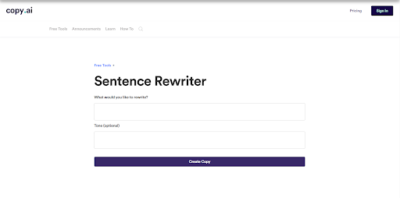
Offering free versions or demos of your product can help prospects get closer to the final decision stage. For example, this free version of a sentence rewriter allows users to test the tool and decide if it is appropriate for their specific needs. If you can check off all the boxes of your user’s needs during the “test drive,” then the final sale is as good as yours.
Coupon
A coupon is an incentive that appeals to the fear of missing out. It reduces a buyer’s price objection by making it seem they leave money on the table if they don’t use the coupon.
How can you say no to a 40% off coupon while supporting all climate-neutral brands? The best way to share coupons with your target audience is through email marketing. Take this example that I received from Sunski around Earth Day.
Wrapping Up
The buyer’s journey has been around for a while, and there are plenty of reasons why.
It’s a simple way to look at how your customers make decisions, allowing you to efficiently segment them into groups with similar needs.
It helps you understand the type of content and messaging you’ll need to engage each group, and it keeps your messaging consistent across the board.
And finally, when you use the buyer’s journey as a guide to create content that educates your audience at every stage, you can extend the effects of each piece of content.
Keep in mind that content isn’t just about copy—it’s about all the different ways you communicate with your audience. From blog posts to emails you send out to social media posts and case studies.
Your brand is all about what you put out into the world. So it’s crucial to think about how these messages work together as one big story, with the primary goal of generating more sales and growing your business.
About the author
 Kelly Moser is the co-founder and editor at Home & Jet, a digital magazine for the modern era. She’s also an expert in freelance writing and content marketing for SaaS, Fintech, and ecommerce startups.
Kelly Moser is the co-founder and editor at Home & Jet, a digital magazine for the modern era. She’s also an expert in freelance writing and content marketing for SaaS, Fintech, and ecommerce startups.
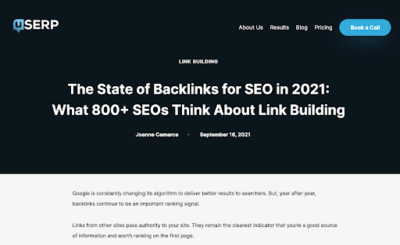 (Image Source)
(Image Source)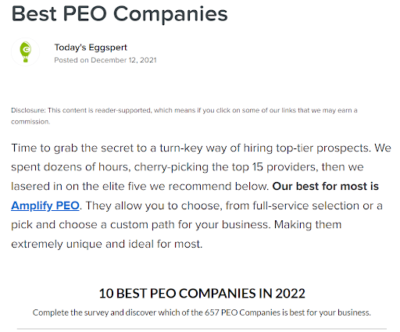 (Image Source)
(Image Source)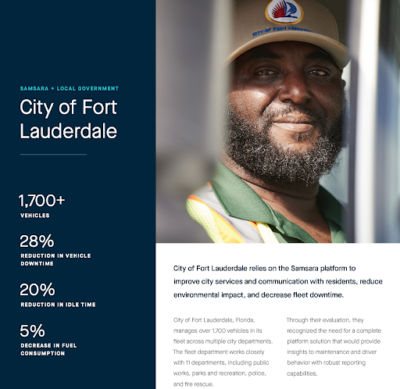
 (Image Source)
(Image Source)